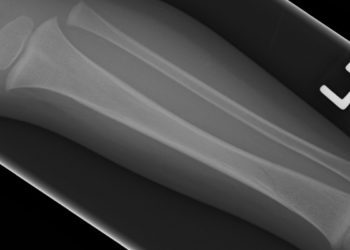Insurance status linked to transfer decisions in trauma cases
Image: PD
1. Uninsured patients were most likely to get transferred to appropriate trauma center.
2. Severe abdominal injuries and older patients were both associated with admission to non-trauma center instead of transfer.
3. Urban teaching hospitals less frequently transferred major trauma patients to trauma centers.
Evidence Rating Level: 2 (Good)
Study Rundown: Using a broad national database, this study showed that severely injured patients who presented to non-trauma centers were often not appropriately transferred to regional trauma centers. Notably, uninsured patients were the most likely to be appropriately transferred to trauma centers, with insured patients more likely to be admitted to non-trauma centers. This may be contrary to some expectations as regional trauma centers have been shown to reduce mortality for severely injured trauma patients. Strengths of this paper include the size of the database, the significant differences found across many of the variables, and the adjustment for patient factors, such as severity of injury at initial presentation to the non-trauma center. A major limitation is the authors’ assumption that all transferred were sent to a regional trauma center, which although likely, is impossible to prove with the administrative data used. It is unclear if patient preferences played a role in admission rates.
Click to read the study in JAMA Surgery
Relevant Reading: A national evaluation of the effect of trauma center care on mortality
In-Depth [retrospective study]: Patients who presented to a non-trauma center with major trauma (Injury severity score > 15), between ages 18-64, were selected from the 2009 Nationwide Emergency Department Sample using injury diagnosis codes. The patients evaluated in this study were more likely to receive better care at a trauma center, and should have likely been transferred. Factors involved in either the patient’s admission to the non-trauma center or the appropriate transfer to a nearby trauma center were evaluated. Multivariate analysis adjusted for patient variables, level of injury, and hospital level characteristics. 19,312 patient encounters across 636 non-trauma centers were evaluated. Overall, patients with Medicaid (OR 2.20, 95% CI 1.67-2.91), Medicare (OR 2.07, 95%CI 1.53-2.81), or private insurance (OR 1.85, 95%CI 1.48-2.32) were more likely to get inappropriately admitted to non-trauma center than uninsured patients. Patients with severe abdominal injuries were also less likely to be transferred (OR 2.50, 95%CI 1.68-3.72). Patients seen at urban teaching hospitals that were non-trauma centers were most likely overall to get inappropriately admitted (OR 4.24, 95%CI 2.10-8.58). Finally, older patients aged 55-64 were the most likely to be inappropriately admitted to a non-trauma center (OR 1.58, 95%CI 1.27-1.96).
More from this author: Drainage from hemopericardium is safe and reduces hospital stay, Preoperative low-dose steroids sufficient for steroid-treated IBD , Negative pressure wound therapy for open abdomens appears safe, Latissimus dorsi tendon transfer are effective long-term, Health care costs not reduced after bariatric surgery
©2012-2014 2minutemedicine.com. All rights reserved. No works may be reproduced without expressed written consent from 2minutemedicine.com. Disclaimer: We present factual information directly from peer reviewed medical journals. No post should be construed as medical advice and is not intended as such by the authors, editors, staff or by 2minutemedicine.com. PLEASE SEE A HEALTHCARE PROVIDER IN YOUR AREA IF YOU SEEK MEDICAL ADVICE OF ANY SORT.







![Addition of bevacizumab fails to benefit overall survival in newly diagnosed glioblastoma [RTOG 0825 trial]](https://www.2minutemedicine.com/wp-content/uploads/2014/02/AFIP-00405558-Glioblastoma-Radiology-e1381685577283-75x75.jpg)